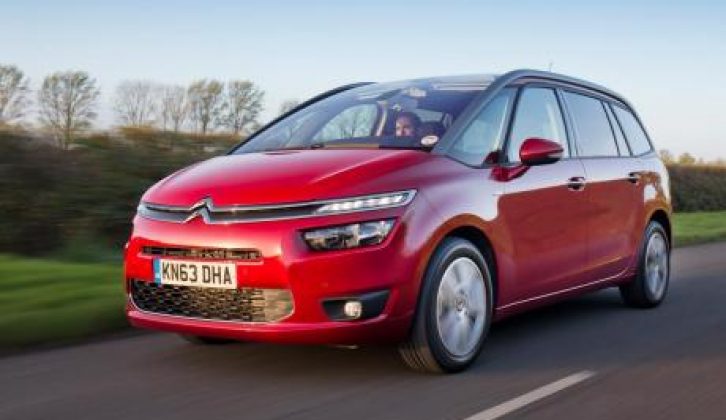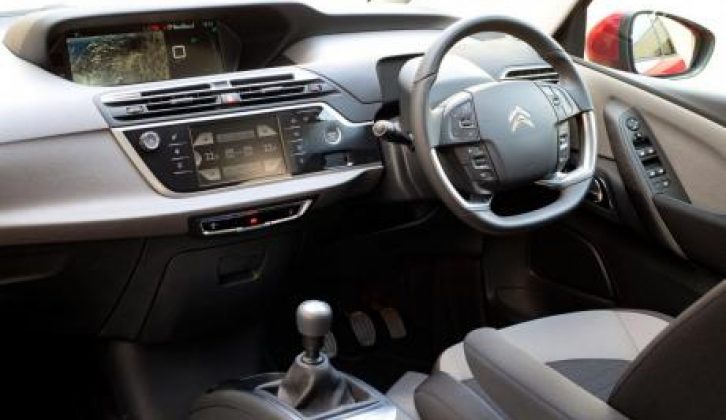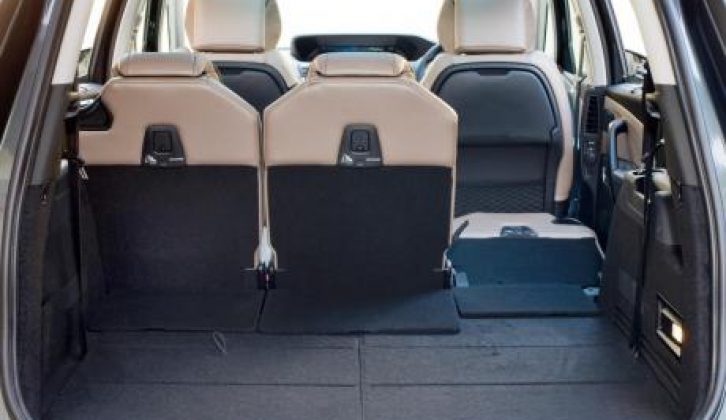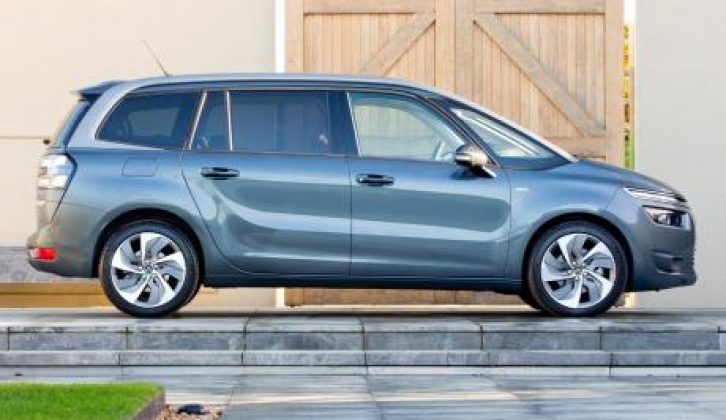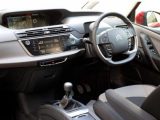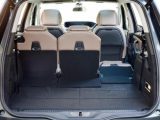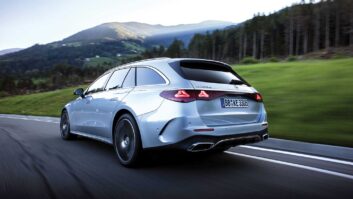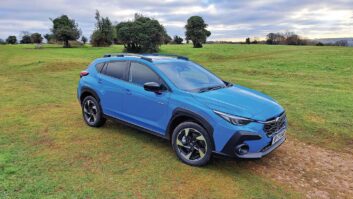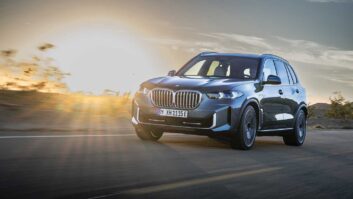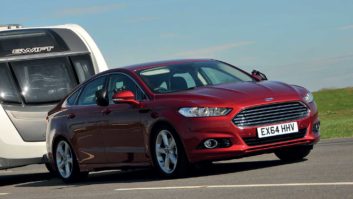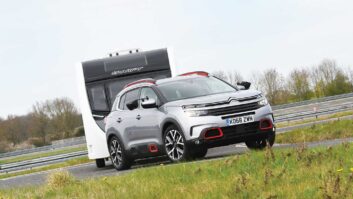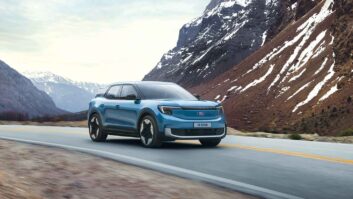[tl:gallery size=460×299]
THE NEW CITROEN Grand C4 Picasso has only been on sale a few days but it’s already racked up a major accolade. Last week, our colleagues on What Car? made it their MPV of the Year.
Having spent much of yesterday driving the Grand C4 Picasso – and just as importantly, sitting in all three rows and folding seats – I can see why What Car?‘s road testers rate the new seven-seater so highly. What’s more, the 2.0-litre diesel in particular also has the makings of a very capable tow car.
[tl:gallery size=460×308]
Driving the new Citroën
With 150hp (equivalent to 148bhp) and 273lb.ft of torque, the 2.0 Blue HDI engine isn’t short of muscle. It’s a little flat at very low revs but soon wakes up, and once peak torque arrives at 2000rpm the Citroën gathers speed at an impressive rate.
The Grand C4 Picasso is up to 110kg lighter than the old model, but it’s still heavy enough to make a suitable match for a reasonable range of caravans, especially for experienced drivers who are prepared to tow matches of between 85% and 100% of the car’s kerbweight. The 2.0 Blue HDi manual has a kerbweight of 1505kg (including 75kg for the driver not included in Citroën’s published kerbweight), which gives an 85% match figure of 1279kg. The legal towing limit is 1700kg.
Having tried the car with both the six-speed manual and the six-speed automatic, I preferred the manual. Although the auto shifts gear smoothly it does take the edge off the 2.0-litre’s impressive performance. The auto’s kerbweight climbs to 1551kg but the legal towing limit is 100kg lower than the manual’s. With either gearbox (in fact across the whole range) the noseweight limit is a modest 70kg.
I also drove the e-HDI 115, expected to be the best-selling model in the range. I can see why. The engine is smooth and refined, and despite having considerably less pulling power than the 2.0-litre (199lb.ft) it had no trouble shifting a car with a driver and one passenger. However, load up with kids and bags and stick a family tourer on the back and performance is likely to be rather pedestrian. The kerbweight of 1395kg gives an 85% match figure of 1186kg. The legal towing limit is 1500kg.
Citroën predicts nine out of ten customers will choose diesel power, but there are also two petrol models which I didn’t have the opportunity to drive: the 1.6-litre VTi 120 and the 1.6-litre turbocharged THP 155.
Whichever engine is chosen, the new Grand C4 Picasso is a very different car to its predecessor. Citroëns have long been associated with a soft and comfortable ride, but the Grand is much firmer than the old model. Cars with 17-inch alloys struck a good compromise between comfort and control, although those riding on 18-inch alloys and low-profile tyres felt noticeably less supple. Either way, though, this more resolute approach to bumps in the road bodes well for stability when towing. I look forward to finding out at the Tow Car Awards in the spring.
[tl:gallery size=460×348]
Inside the Grand C4 Picasso
Testing the new Citroën’s towing credentials will have to wait for another time, but there’s no doubt the Grand is an excellent MPV.
Compared with the five-seat C4 Picasso, Citroën has added another 55mm (roughly two inches) between the axles. That means there’s plentiful legroom in the second row, even for tall adults. The impression of space is enhanced by the huge glass area which makes for a light and open feel, even on a dull and overcast day.
Those in the third row don’t get as much room, but that’s true in just about any MPV. For short trips seats six and seven are reasonably comfortable, and become more accommodating if the second row passengers slide their seats forward.
Getting to the third row is quite straightforward, since the outer chairs in the second row move well out of the way.
If you need to carry a lot of luggage rather than seven people, the Grand C4 Picasso has a 632-litre boot with the third row folded into the floor, rising to 2181 litres with the second row folded away.
The cabin isn’t just big, it’s clever, too. Tipping, folding and sliding the seats through all their many permutations is a quick and easy job, and there’s lots of storage dotted around the cabin, including two useful hidden spaces beneath the feet of second row passengers.
[tl:gallery size=460×301]
Equipment, running costs and prices
There are four spec levels to choose from: VTR, VTR+, Exclusive and Exclusive+. Even the entry-level VTR cars have 16-inch alloys, air conditioning, front and rear electric windows and a comprehensive list of safety kit. Euro NCAP has assessed the Grand C4 Picasso’ safety and awarded the maximum five stars.
Fuel efficient engines promise low running costs. The 1.6 e-HDI 115 achieves 70.6mpg on the combined cycle, while the lower powered e-HDI 90 ETG6 achieves 74.3mpg. The Blue HDI 150 manual returns 65.7-67.3mpg as a manual, or 61.4-62.8mpg as an auto (the figures vary depending on the size of the alloy wheels).
Prices start from £19,200 for the VTi 120, while the diesel range is begins at £20,595. Go for the engine best suited to towing, the 2.0 Blue HDI, and the asking price is at least £24,455.
I’m not surprised the Grand C4 Picasso won its gong from What Car?. We’ll have to wait a few months to discover whether it can do the same at the Tow Car Awards 2014.
